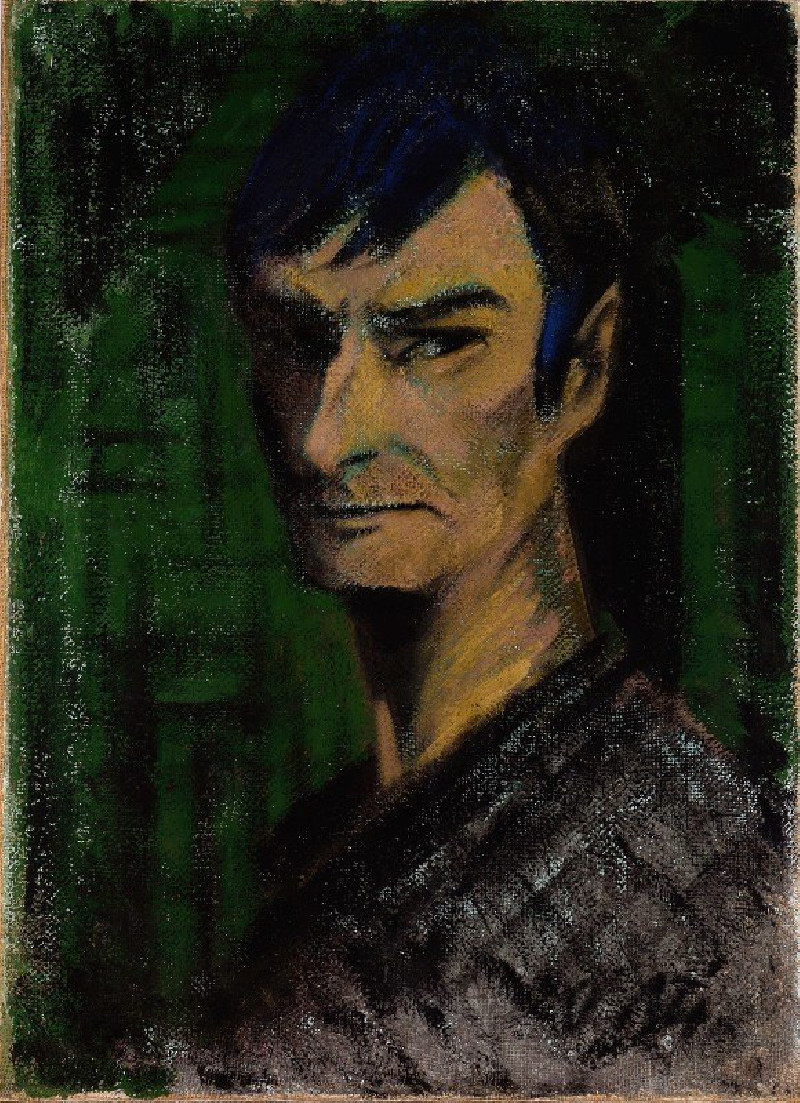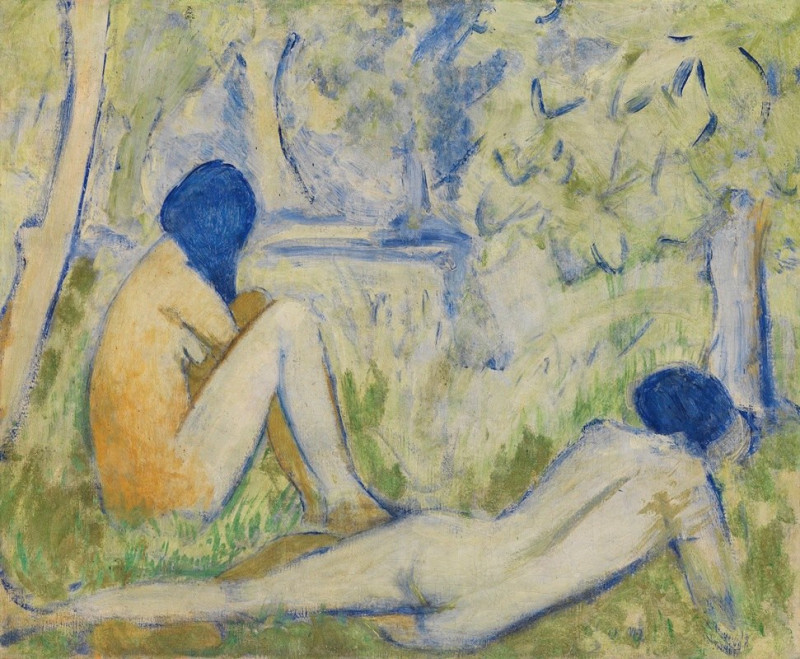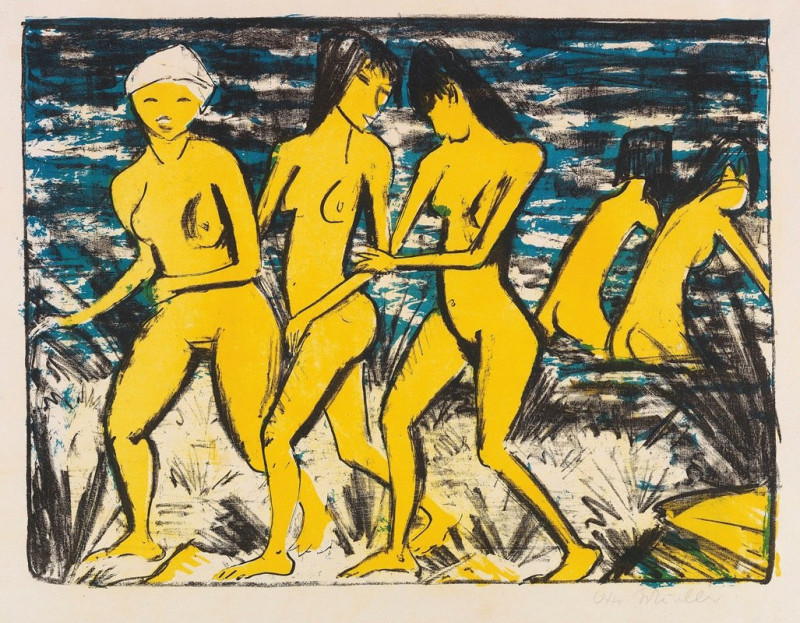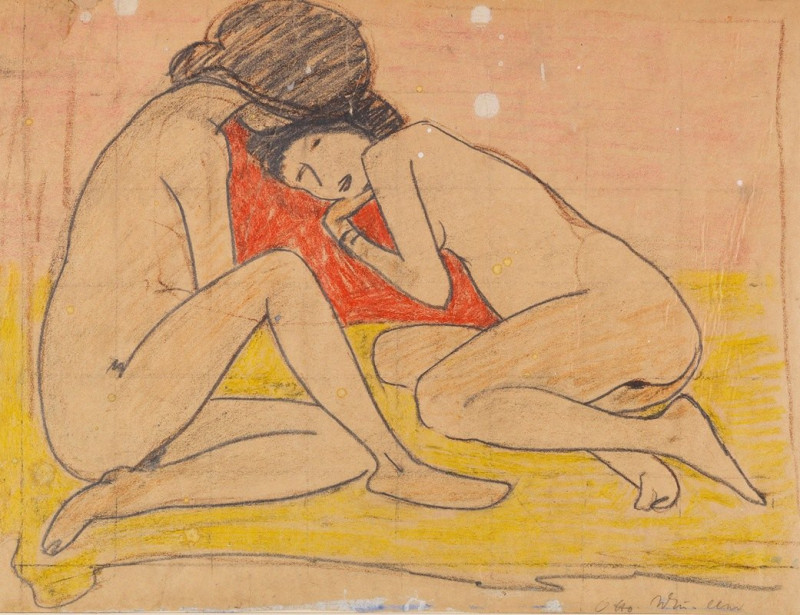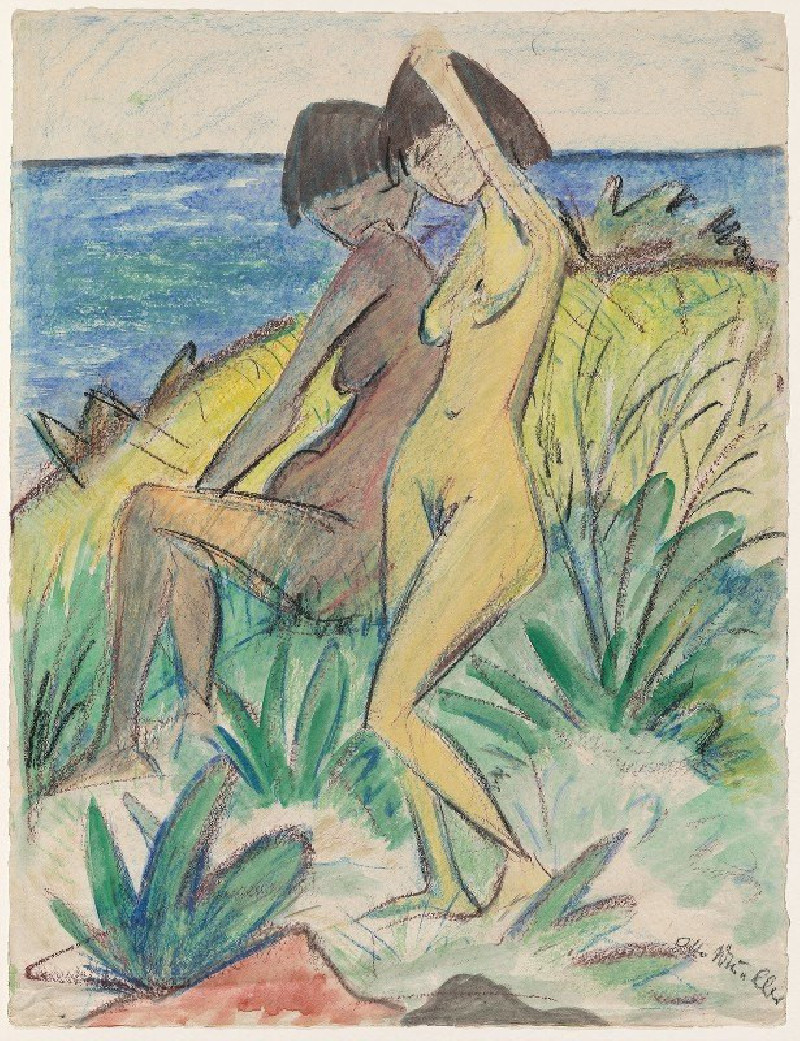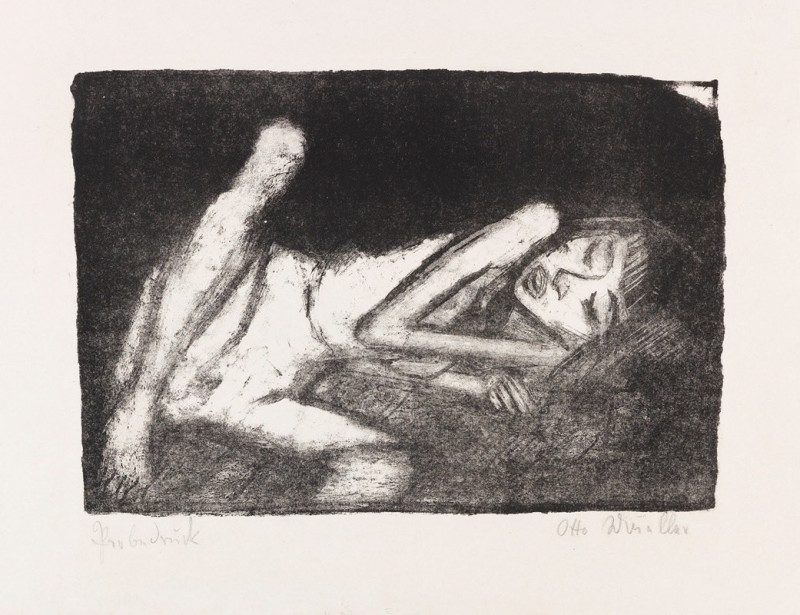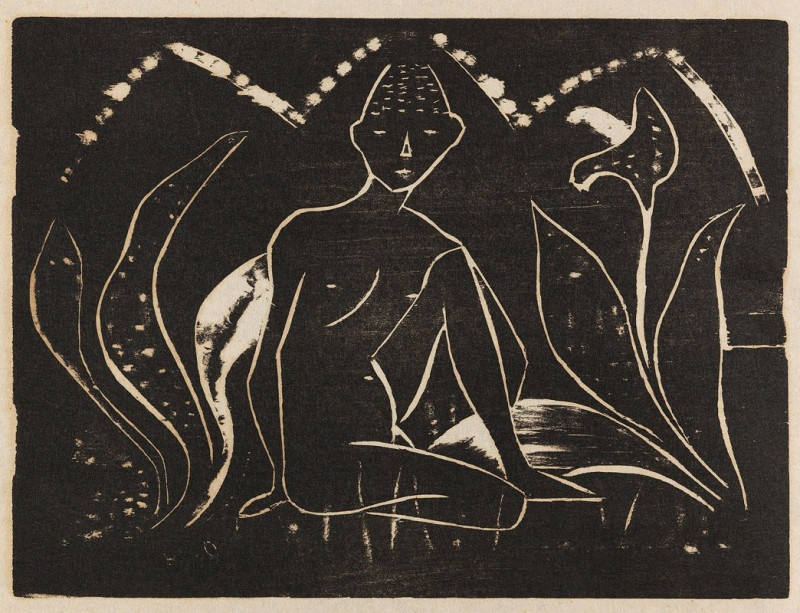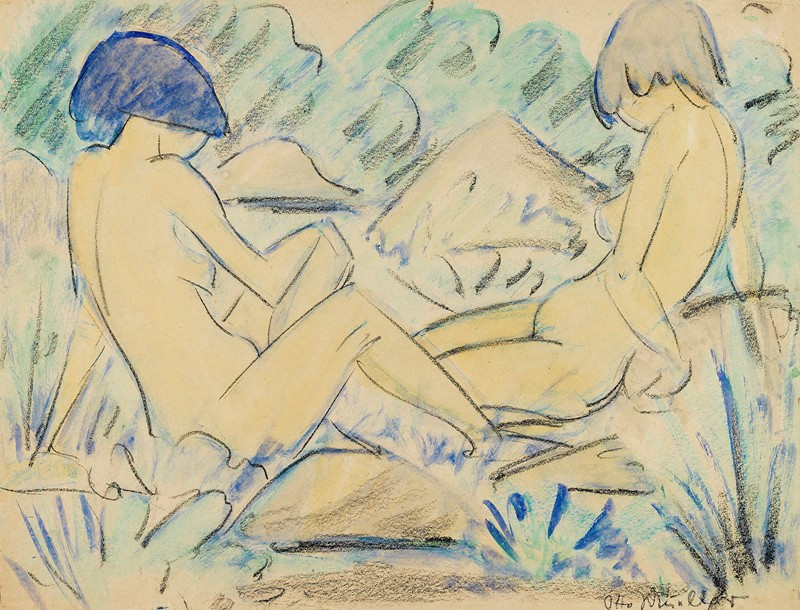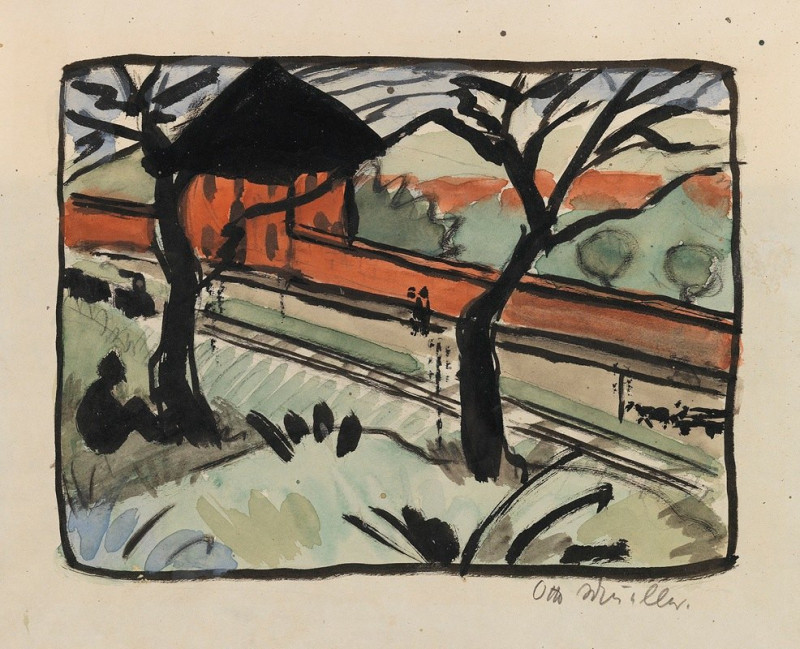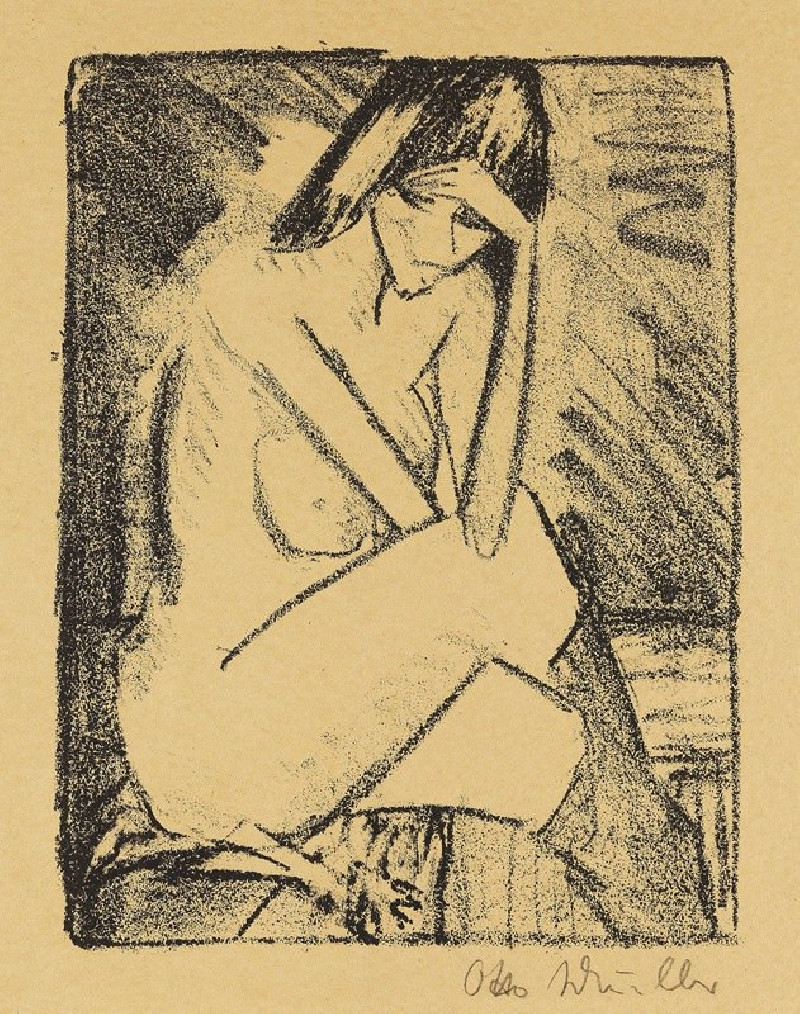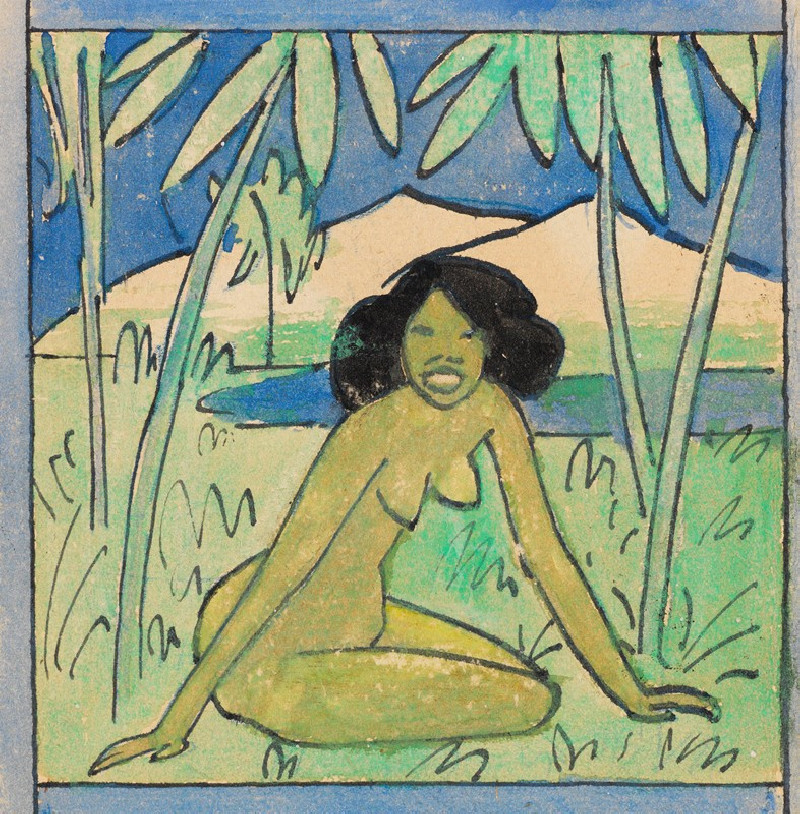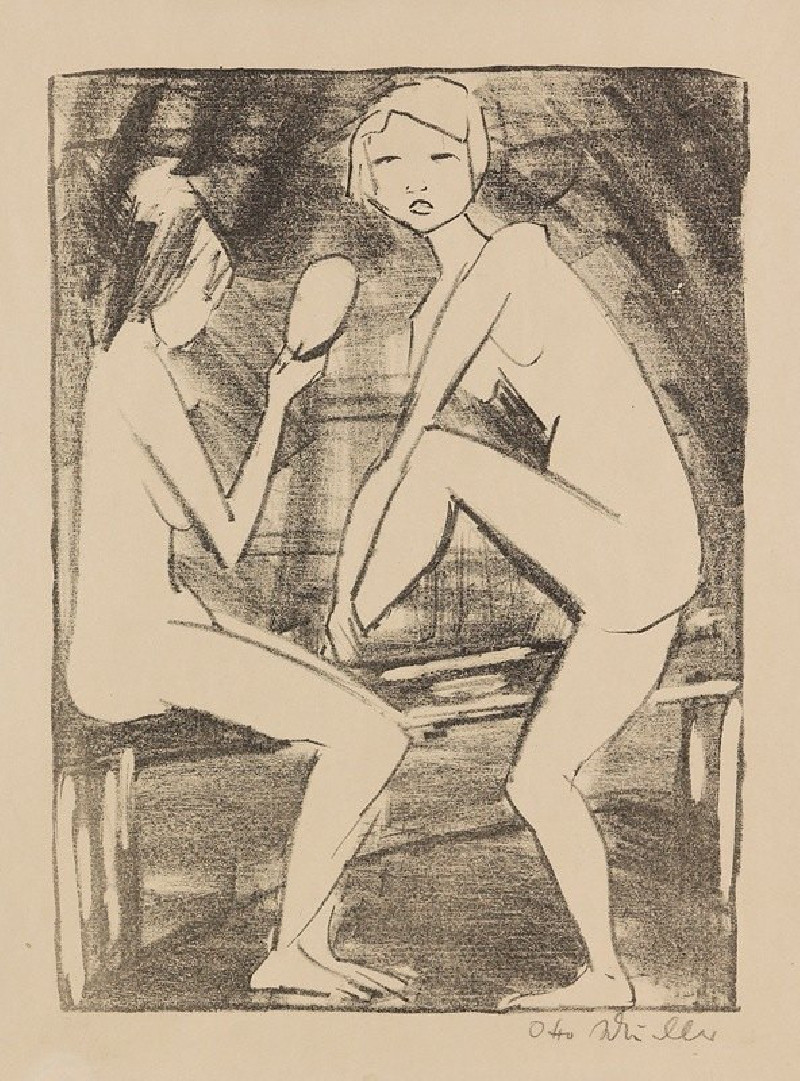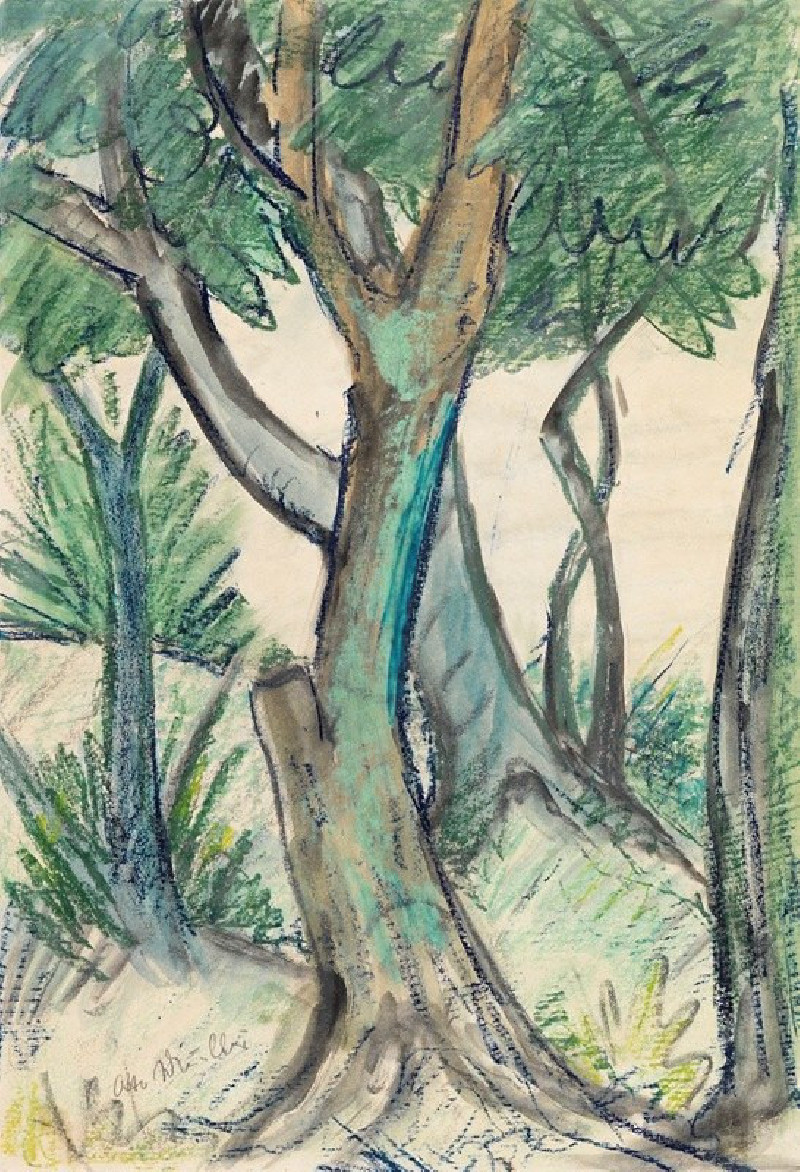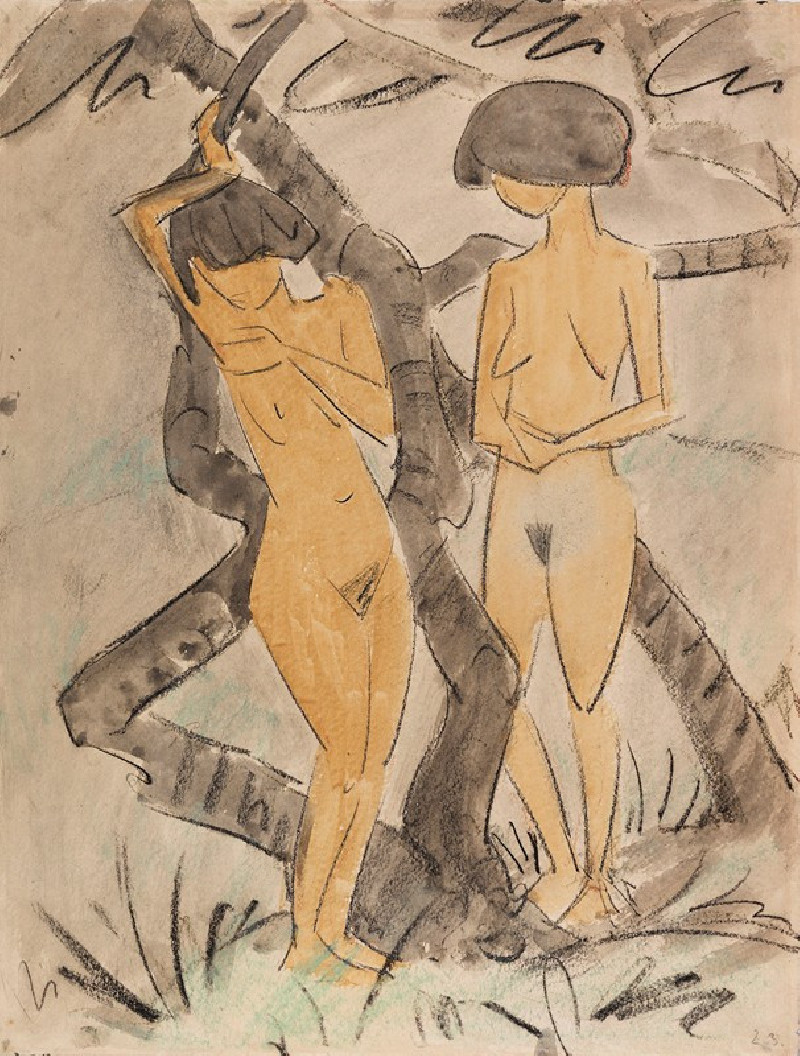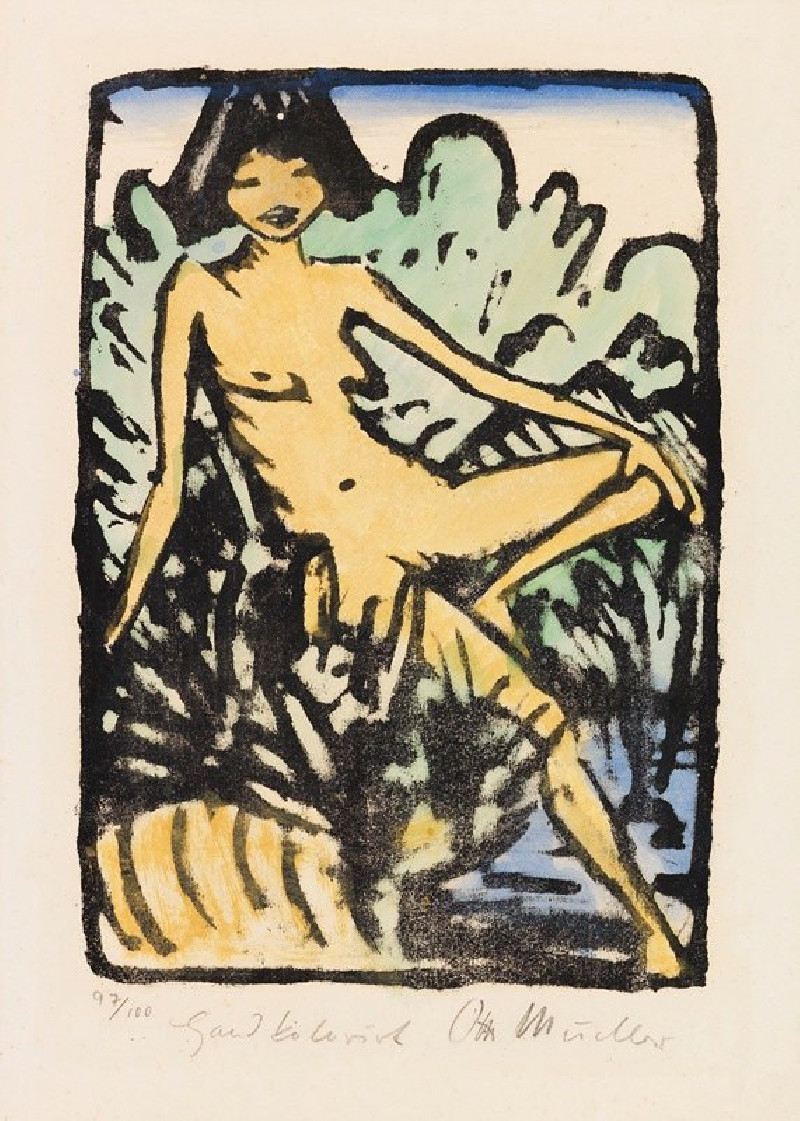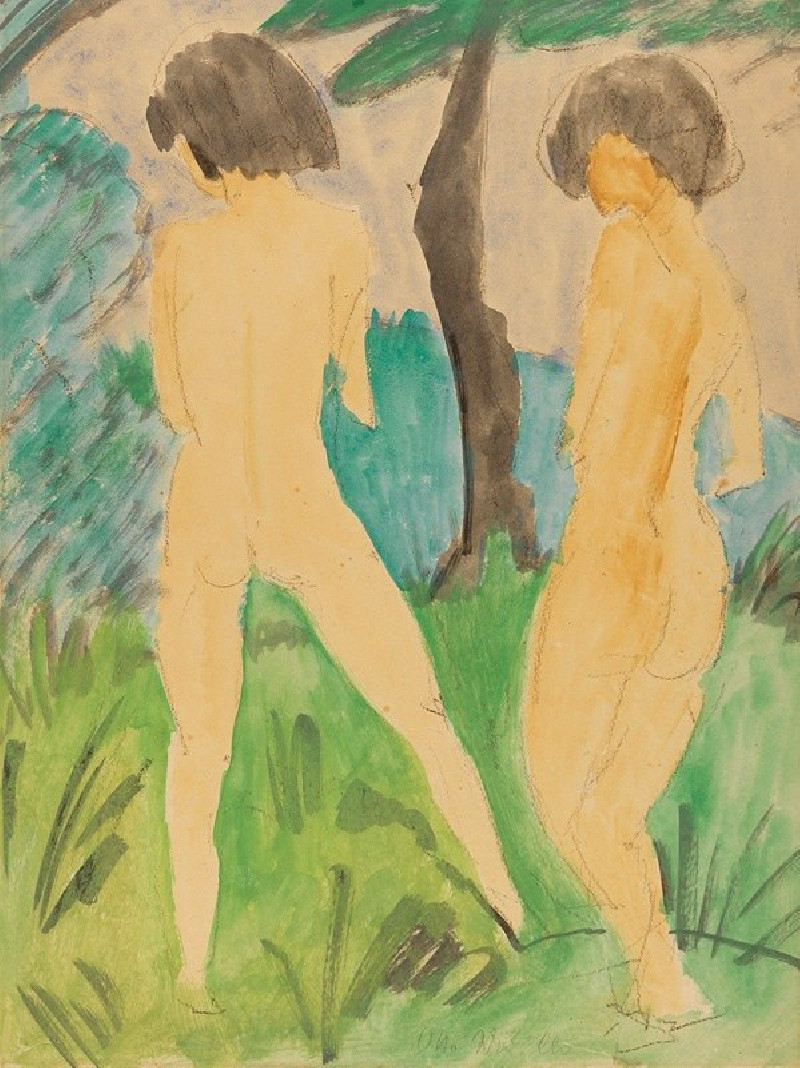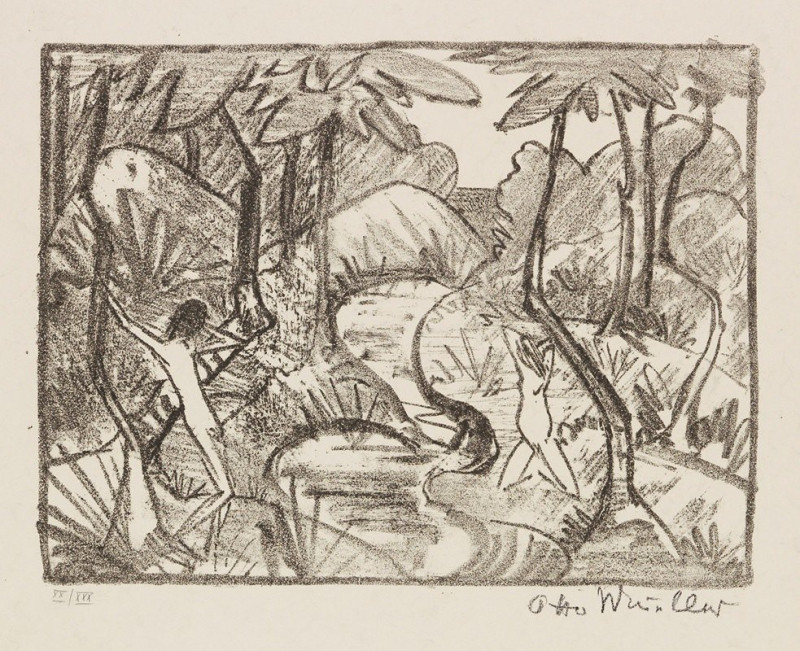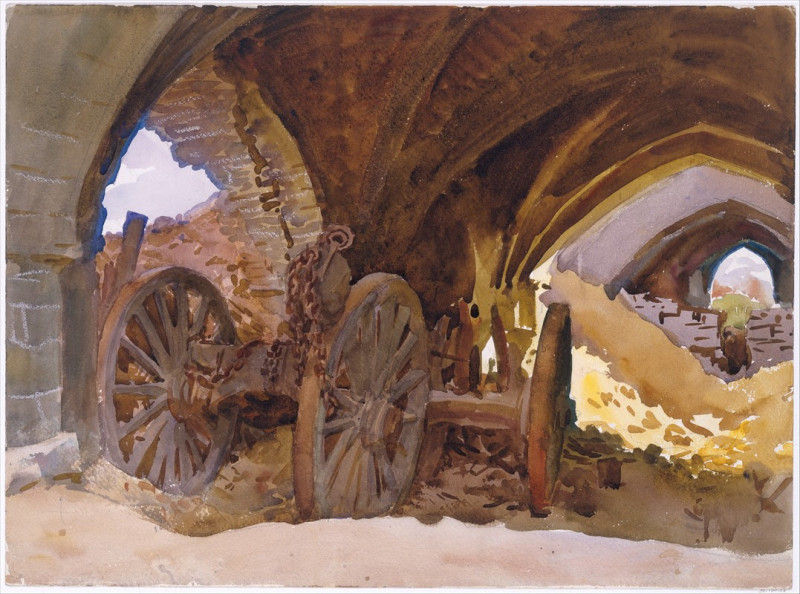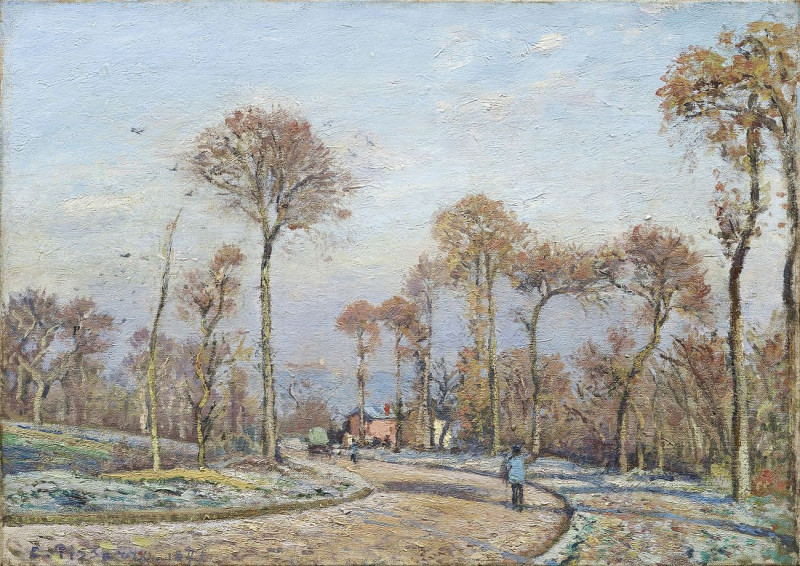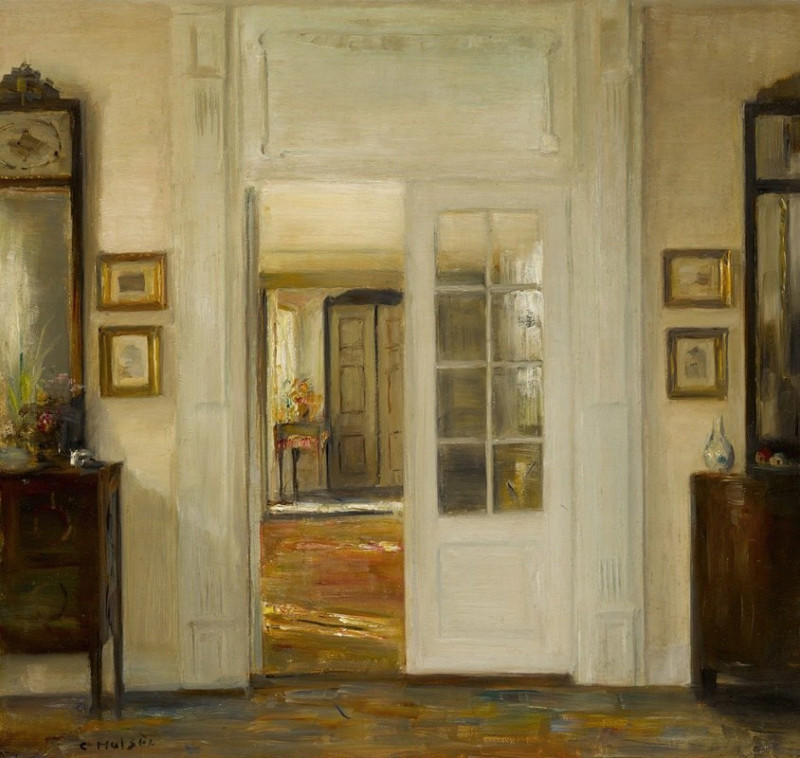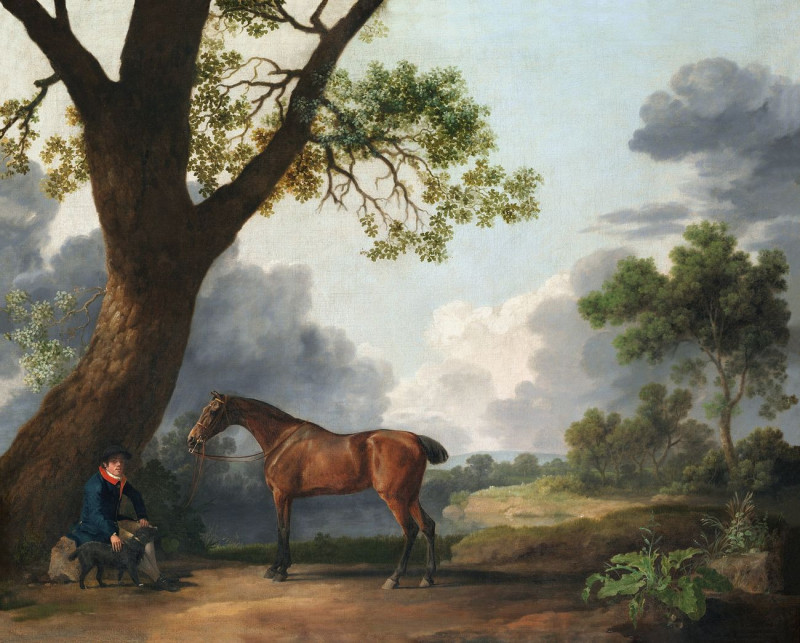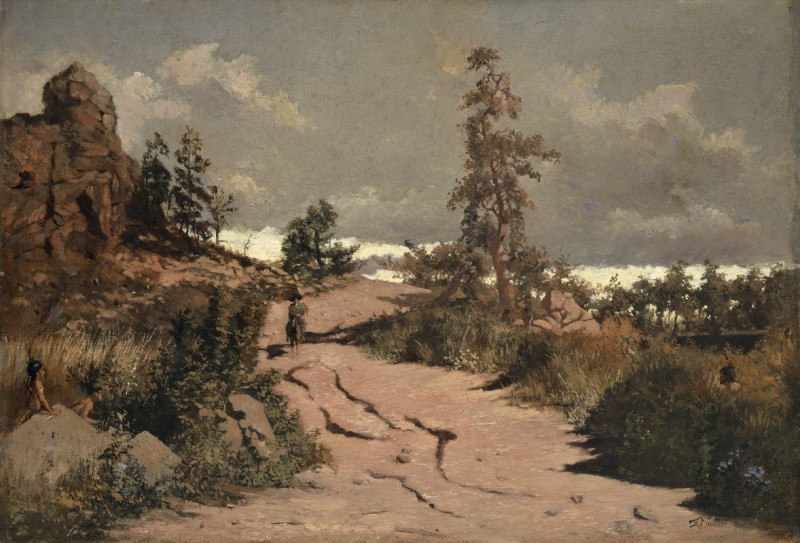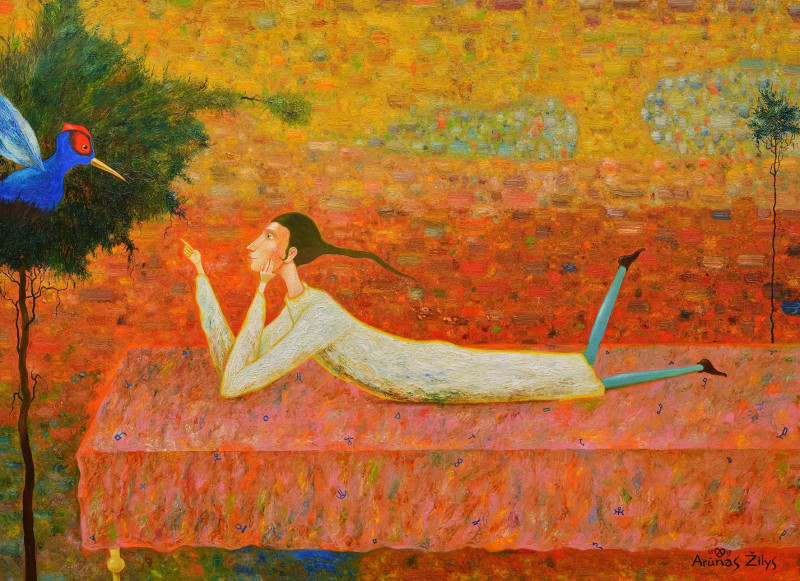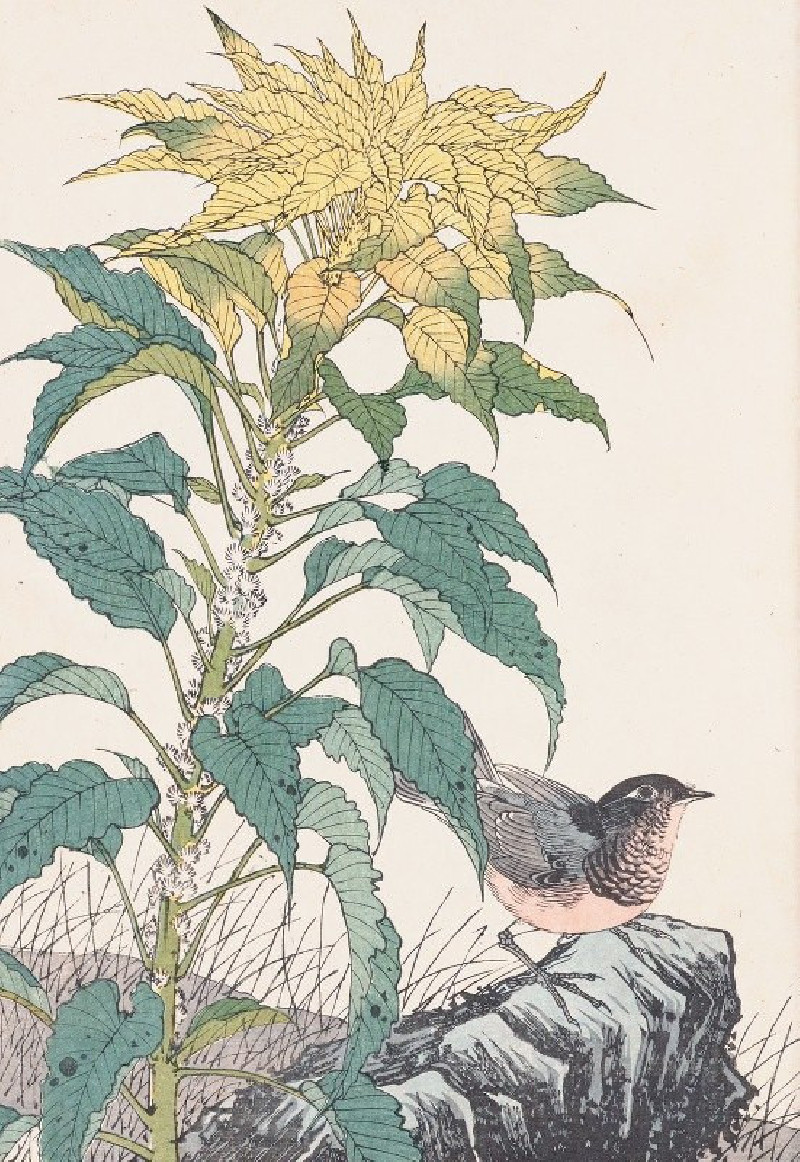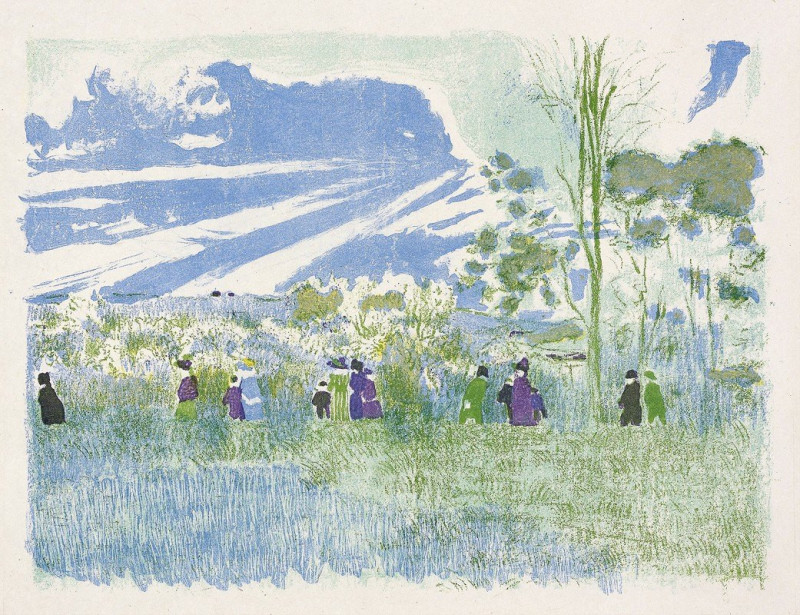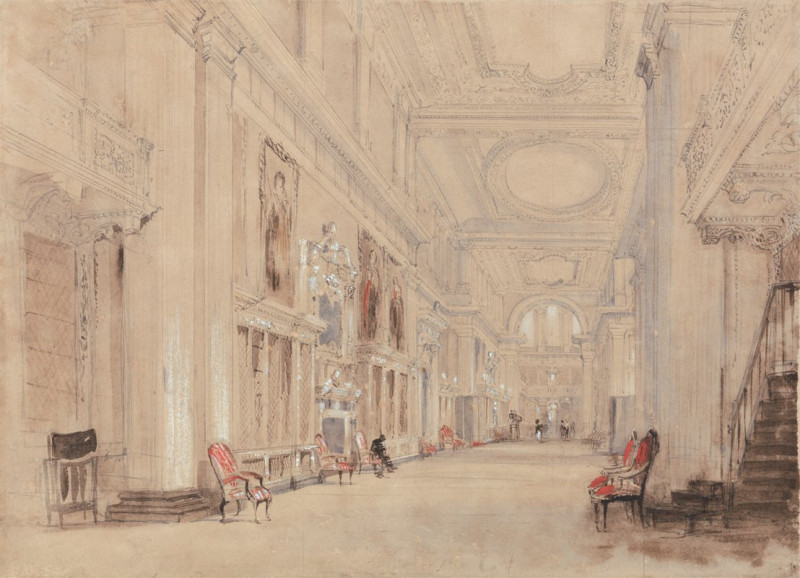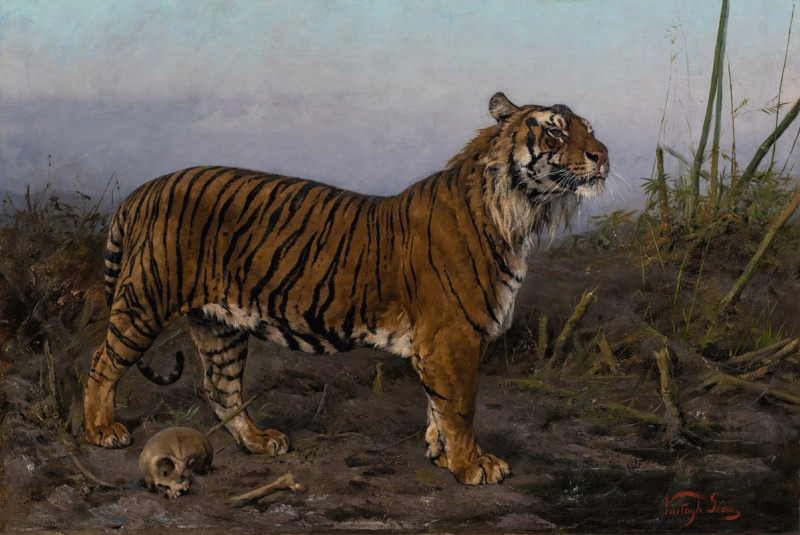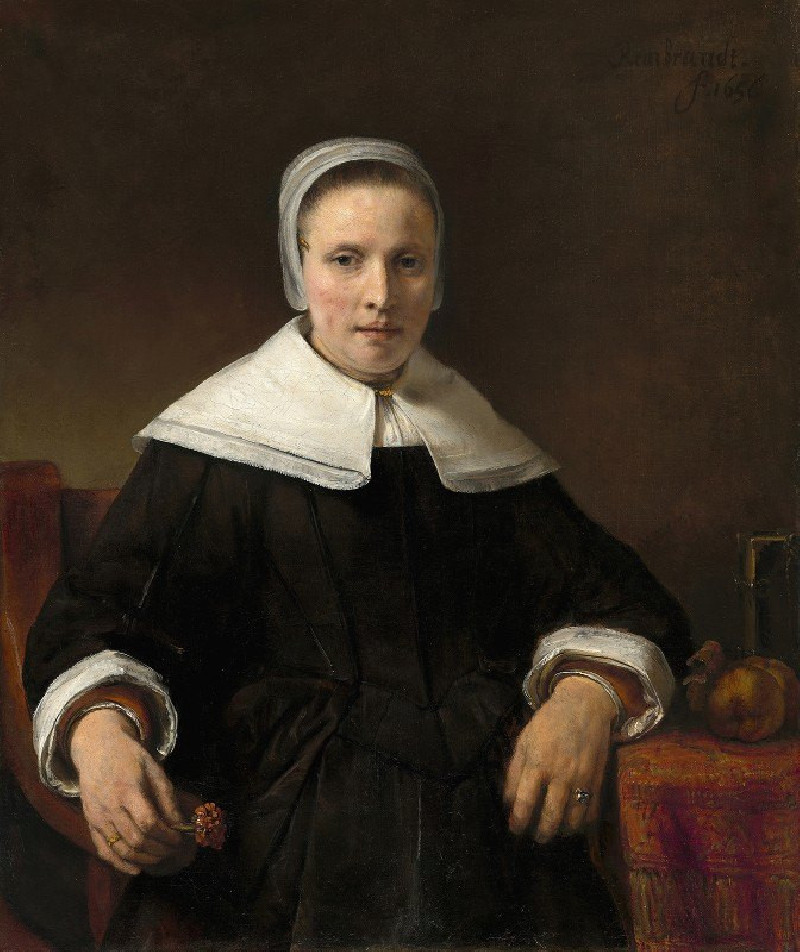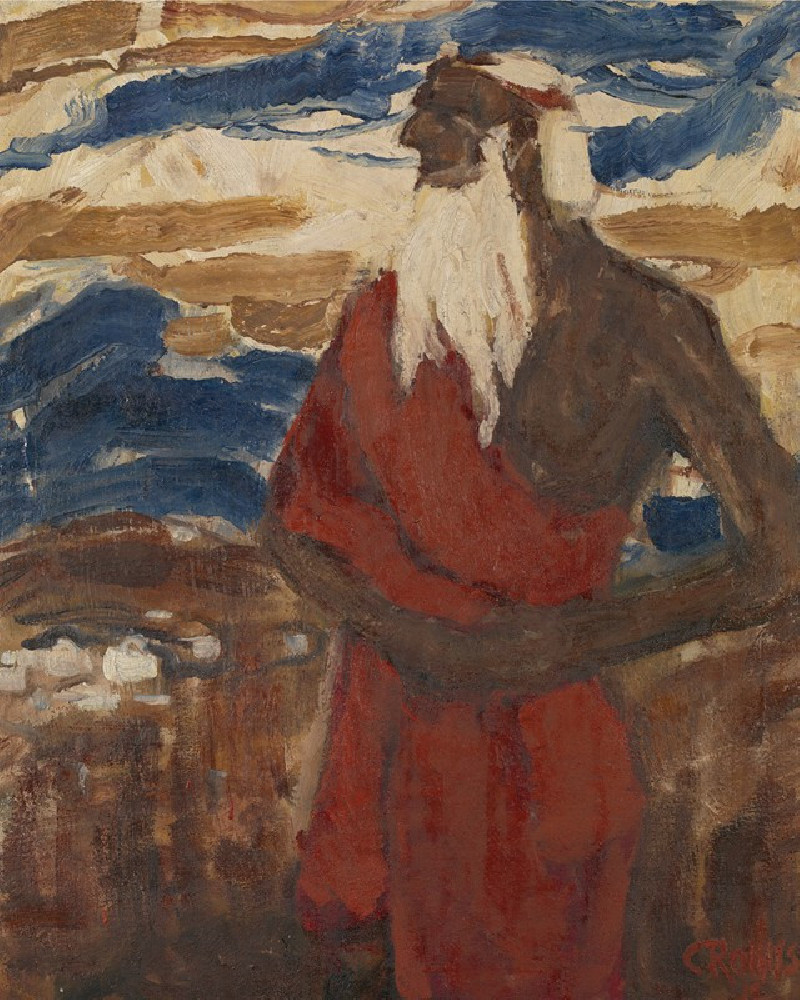Self-Portrait (c.1921)
Technique: Giclée quality print
Recommended by our customers
More about this artwork
Otto Mueller, a key figure in the German Expressionist movement, offers a glimpse into his world through the art of self-portraiture. "Self-Portrait" (circa 1921) immerses the viewer in a powerful visual exploration of the artist's identity and emotional state during the early 20th century.The portrait features Mueller with a stern, contemplative expression, directing an intense gaze that seems to penetrate beyond the canvas. His features are sharply defined with bold, dark lines that contrast starkly against the mottled green and brown background, suggestive of the natural settings that often appear in his works. The use of shadow and light accentuates his chiseled face, highlighting a sense of rugged individualism and perhaps, a moment of introspection.Mueller's choice of a subdued, earthy palette imbues the painting with a somber, almost melancholic tone, fitting for the post-war period in which it was created. The textures created through his gestural brushstrokes add a tangible depth to the work, making the emotion portrayed almost palpable.This self-portrait not only serves as a window into Mueller's soul but also reflects the broader existential pursuit characteristic of the Expressionist movement.
Delivery
Returns
Otto Müller was a German painter and printmaker of the Die Brücke expressionist movement.
Mueller was born in Liebau (now Lubawka, Kamienna Góra County), Kreis Landeshut, Silesia. Between 1890 and 1892 he was trained in lithography in Görlitz and Breslau. From 1894 to 1896 he studied at the Academy of Fine Arts in Dresden and continued his study in Munich during 1898. He left Munich's academy after Franz von Stuck classified him as untalented.

